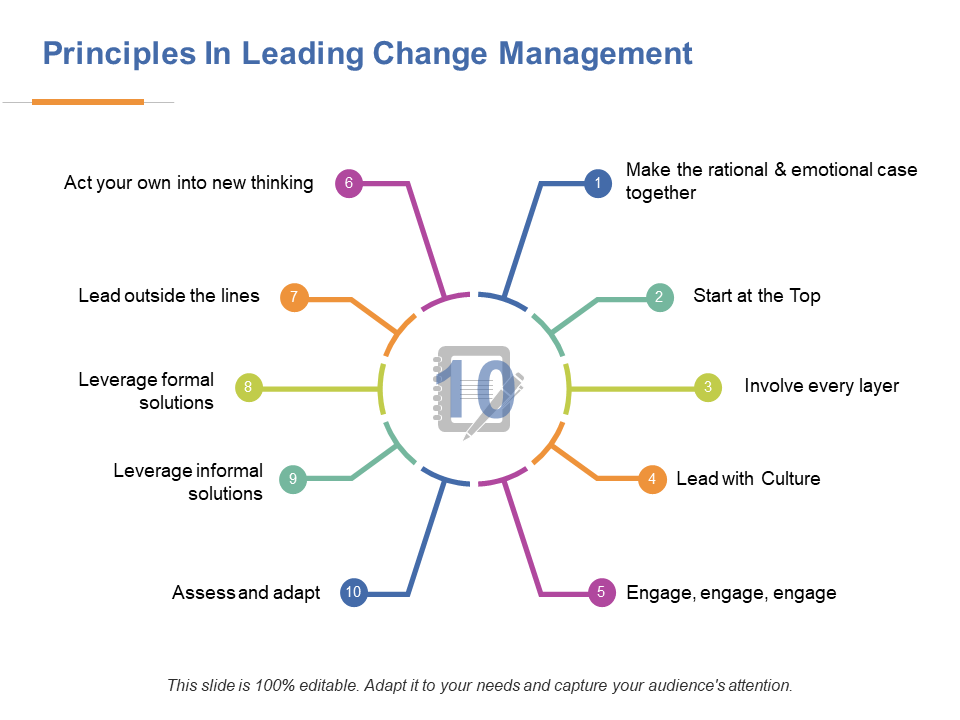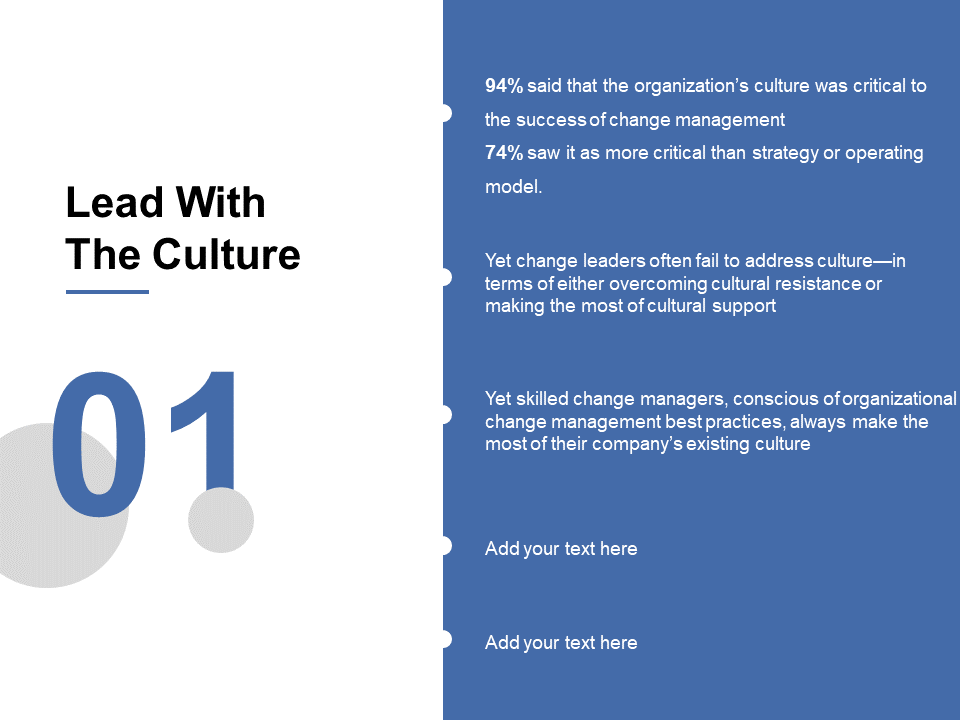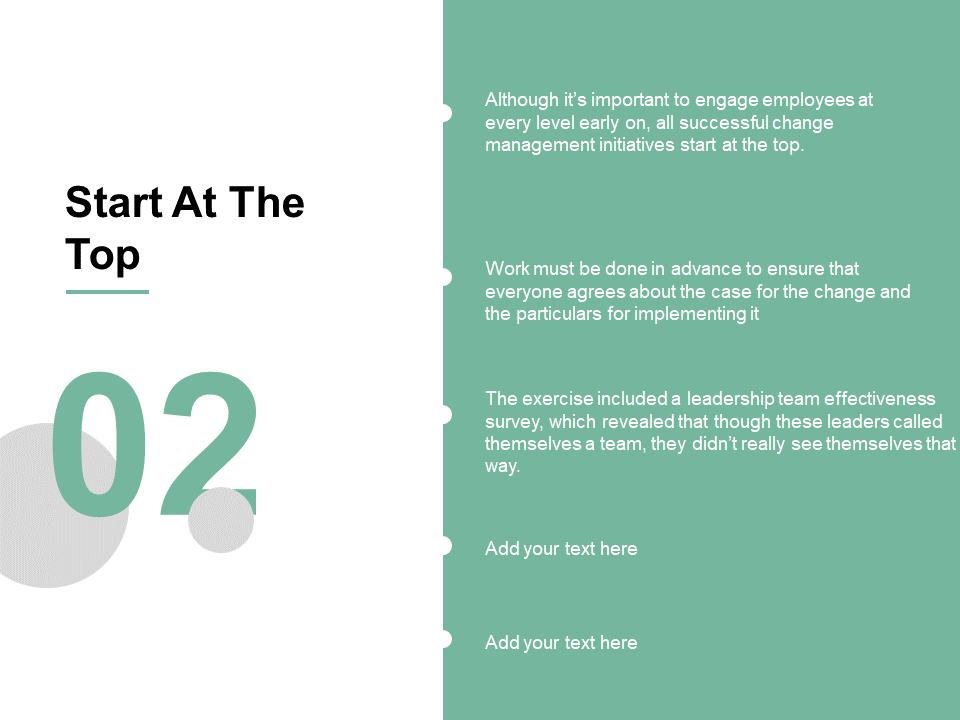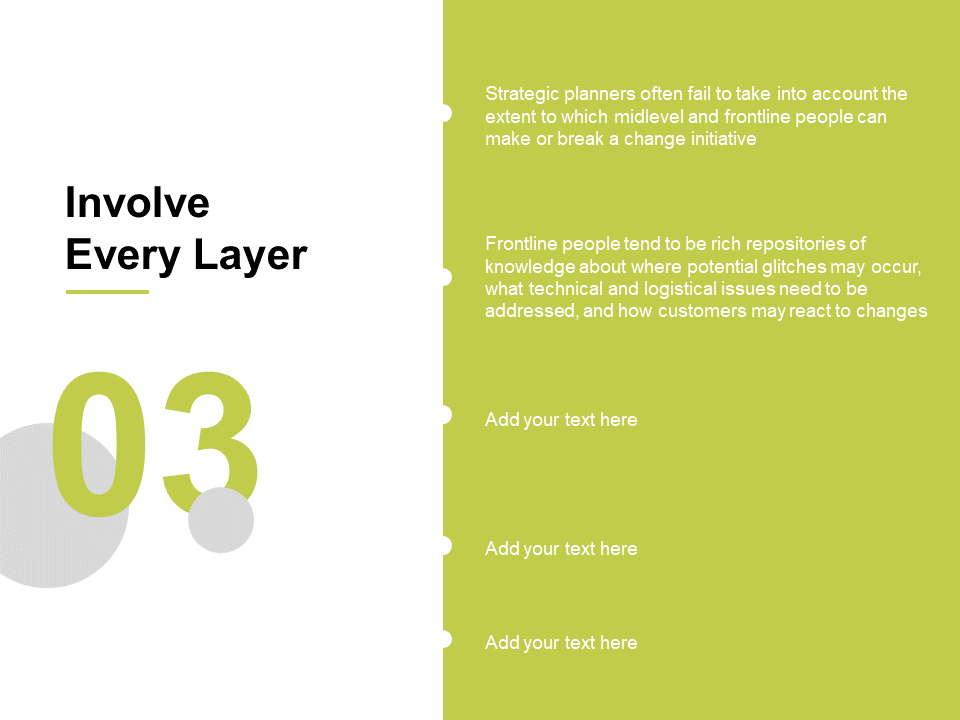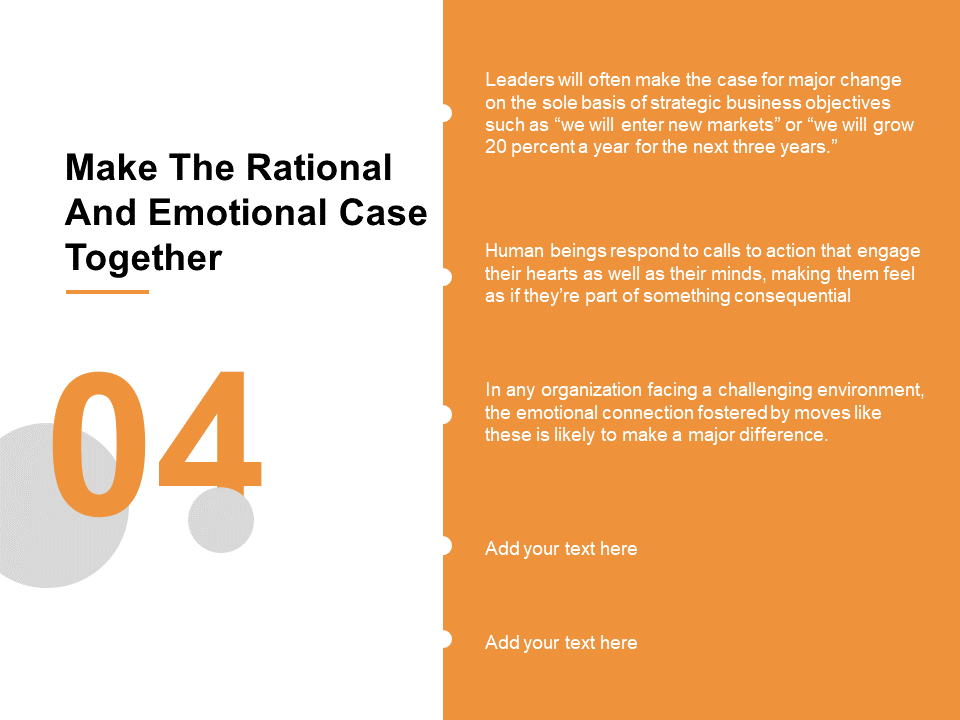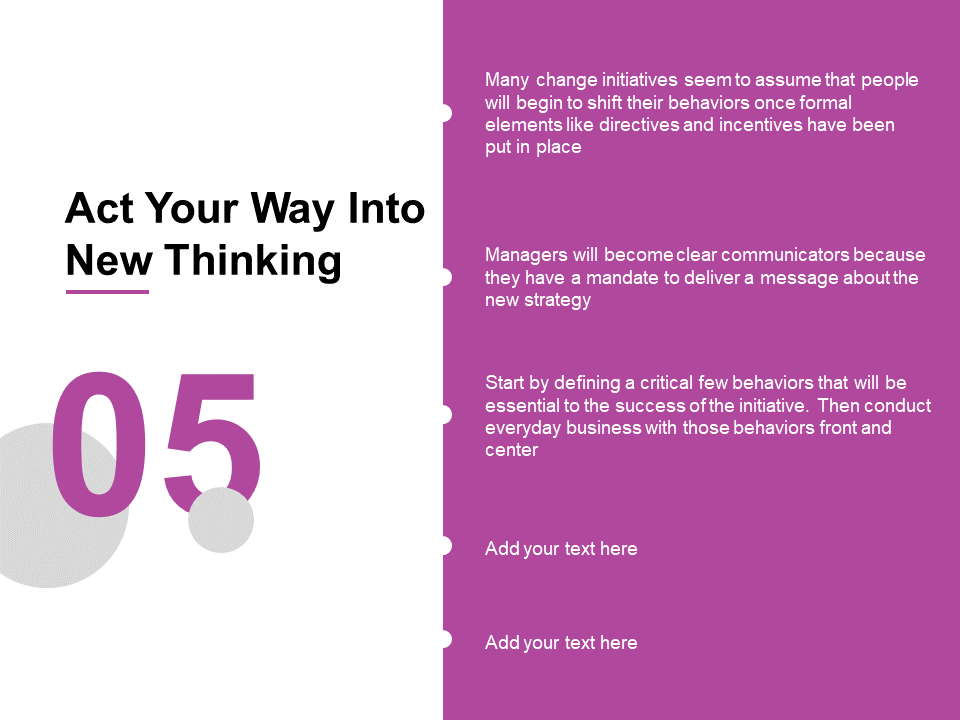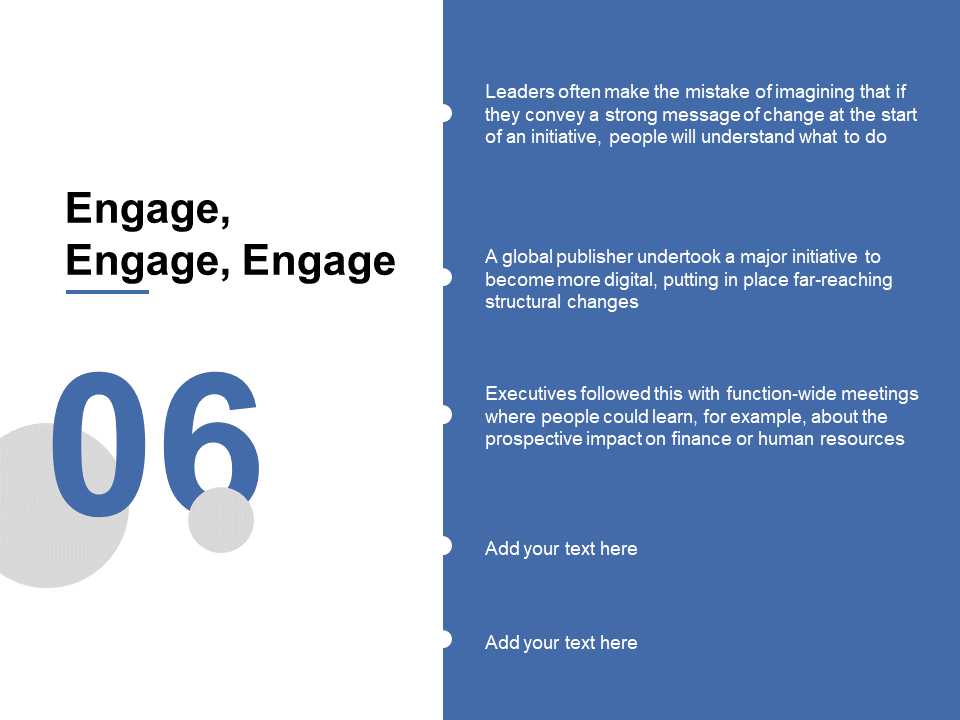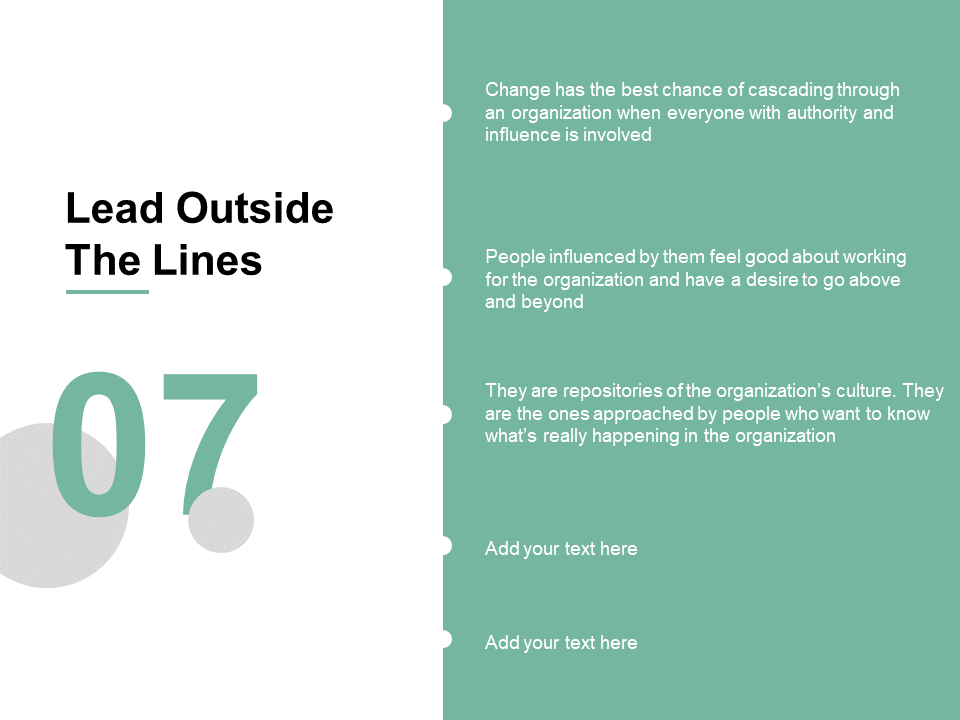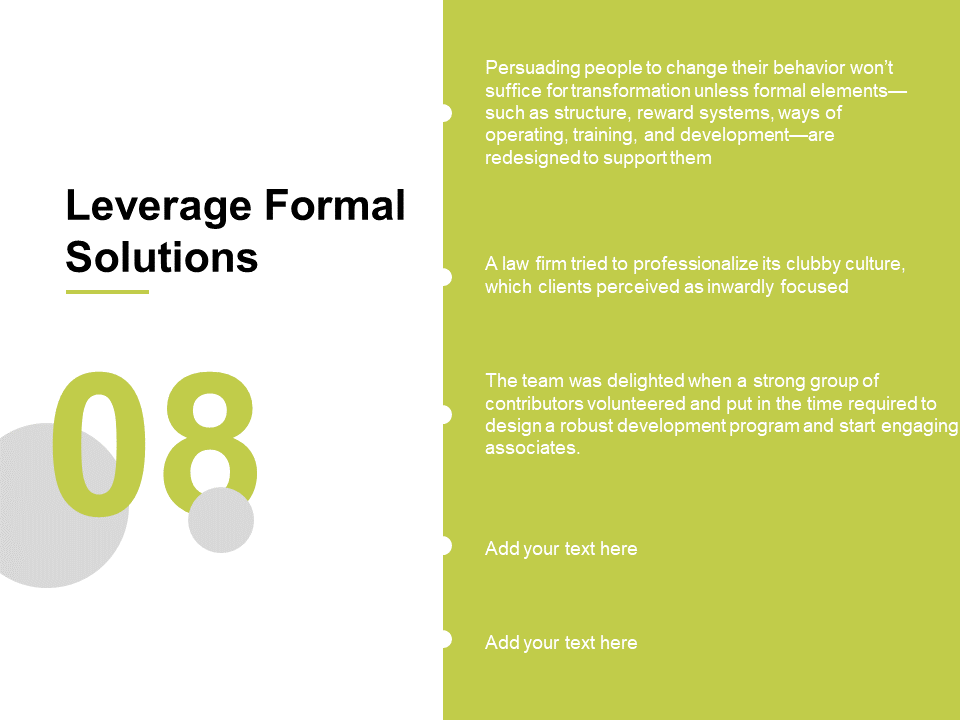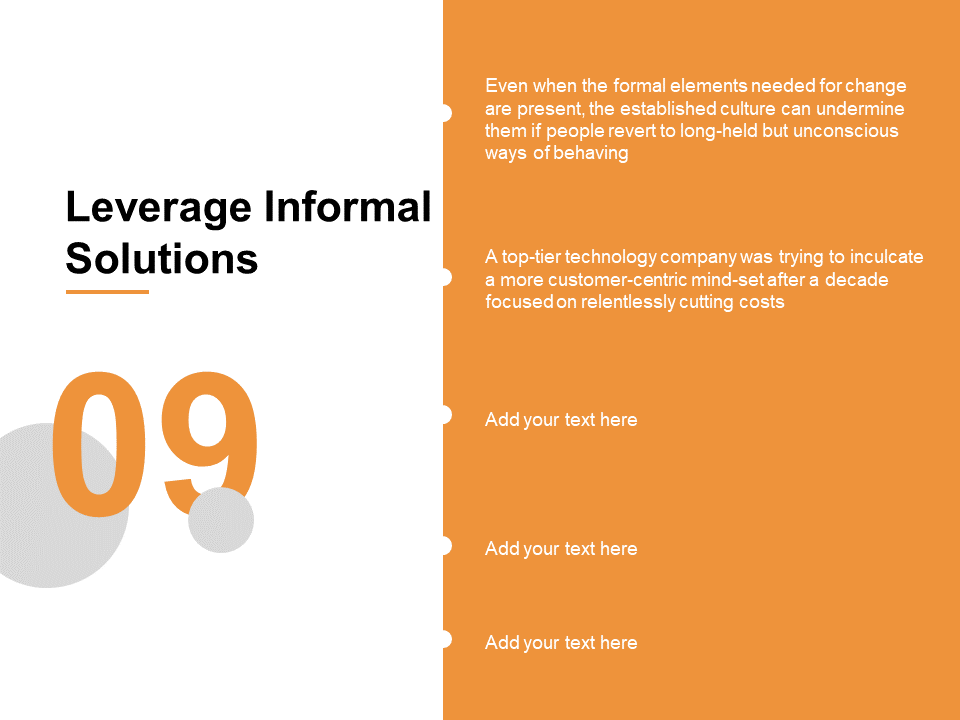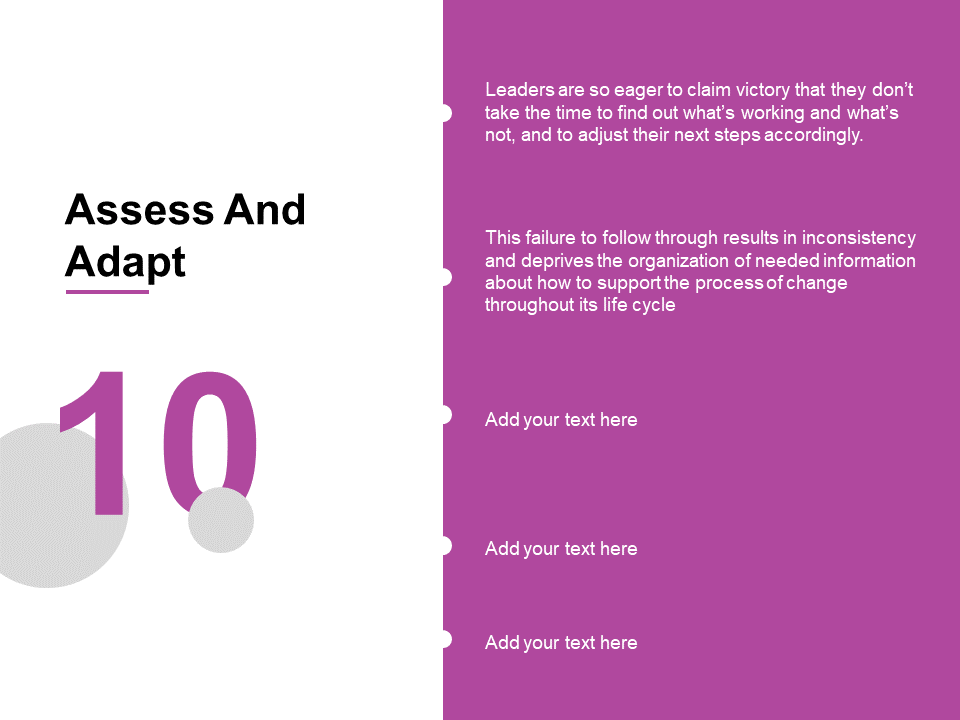Every now and then, a company has to go through a change. Change that brings results in the benefit of an organization and its people. However, that change needs to be aligned with company’s culture, values, people, behaviours, etc. to produce the desired outcome.
Change is not easy. Change is adopted after proper analysis, execution, preparation, and communication. It helps you meet your organizational goals and objectives. There is no single methodology that supports the smooth transition.
Download Content-Ready 10 Principles In Leading Change Management PowerPoint Presentation Slides
We bring you 10 leading business change management guidelines that can be universally adopted by every organization. Help your people go from current to a future state with these 10 leading business change management guidelines.
- Culture Play in an Organization:
Rather than getting carried away with the old ways of an organization, bring cultural change in the way people think. How they feel, behave, and work, bring change that encourage and boost them to adapt the change.
- Top-Down Approach to Implement the Change:
Change must begin from the management level. Senior executives and leaders must be involved in initiating the change. Create a plan to involve the other leaders in the organizational change and ensure they agree and implement the change as a team.
- Involve Every Layer:
Employee involvement plays an integral part in the change management. Involve employees of midlevel and frontline people because their inputs are important since they do their everyday job. They know stuff and transition will be implemented smooth if they are informed and involved at the earliest.
- Take the Logical and Emotional Road Together:
Not everyone might agree with you for the change. It is a genuine concern on their part. They might have questions to ask whether this change is good for them or not? Or what if they don’t want to be part of this change. Before introducing them to a change, communicate the reality and need for the change. Explain how it is important to bring a change and how it will be beneficial for them. Take a professional approach and showcase a roadmap to guide them. More importantly, engage them in a way that they know they are part of something important and consequential.
- Act Yourself into a New Way of Thinking:
Behave your way with a new mindset. Seniors and executives must act with these new behaviors so that your employees feel that the change has already begun. Make them feel the change real with your new actions and behavior.
- Communicate to Engage:
Increase team’s productivity and morale through engaging them in consistent and effective communication. Create a communication plan and engage your team to align with the goals and objectives of an organization.
- Mobilize the Informal Organization:
Involving everyone in the organization, from authorities to the influencer to lead to new levels of performance. You can bring the change and reach to a new level of performance by involving pride builders, trusted nodes, and culture ambassadors. They can the oldest or most trusted leaders or employees that can help people involve in bringing the smooth change in the organization.
Pride Builders: They motivate and inspire others to take pride in their work. They help people feel about themselves and encourage them to go above and beyond.
Trusted Nodes: They are the go- to people. They have the first-hand information and they are approached by everyone to follow what is going on in the organization.
Culture Ambassadors: They are living the change and are best people to showcase or explain why and how this change is important for everyone in the organization.
- Leverage Formal Solutions:
Rebuild the formal ways as per the new situation. For instance, give new structure to reward systems, training, development, ways of operating, etc. This new approach will let you have new was of working which will result in new and real change.
- Leverage Informal Solutions:
Informal and formal solutions must work hand in hand. Even if the formal elements needed for change are present, the fixed and older culture can slow down the people if they still hold on to the old ways of taking decisions. Because of which leveraging formal and informal solutions should be done together.
- Measure and Monitor:
Assess the change before going further. Figure out what is working for you and what is not. See where you lack and take necessary steps to bring any changes in the transition plan. This continuous measuring and monitoring will let you have more engagement and success.
Don’t get stuck up in the old workings of an organization. Bring a change that has an impact and increases productivity. Implement the change without hampering the processes and people.
Download Ready-Made 10 Principles In Leading Change Management PowerPoint Presentation Slides
Use these 10 leading business change management guidelines for quick and healthy transformation.


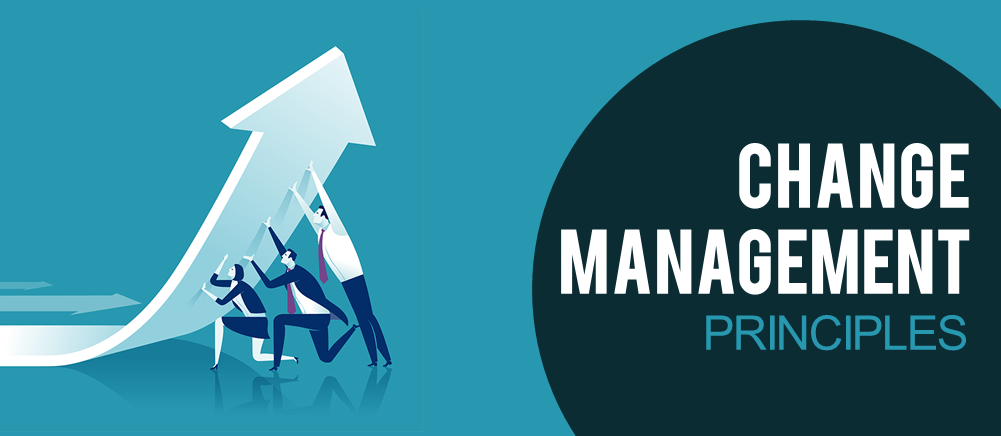


 Customer Reviews
Customer Reviews

